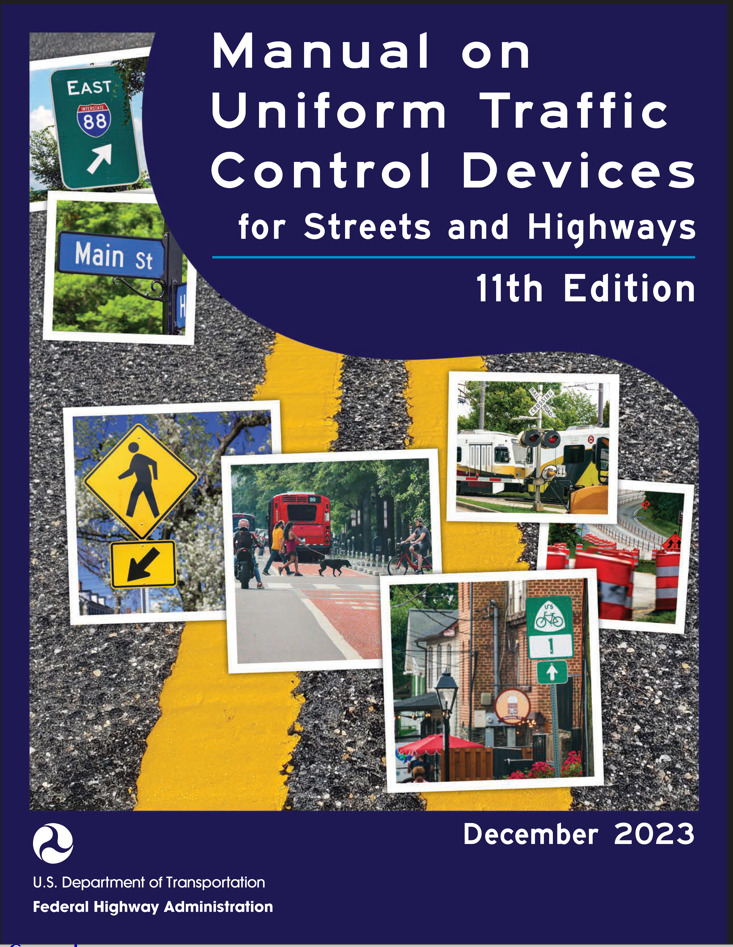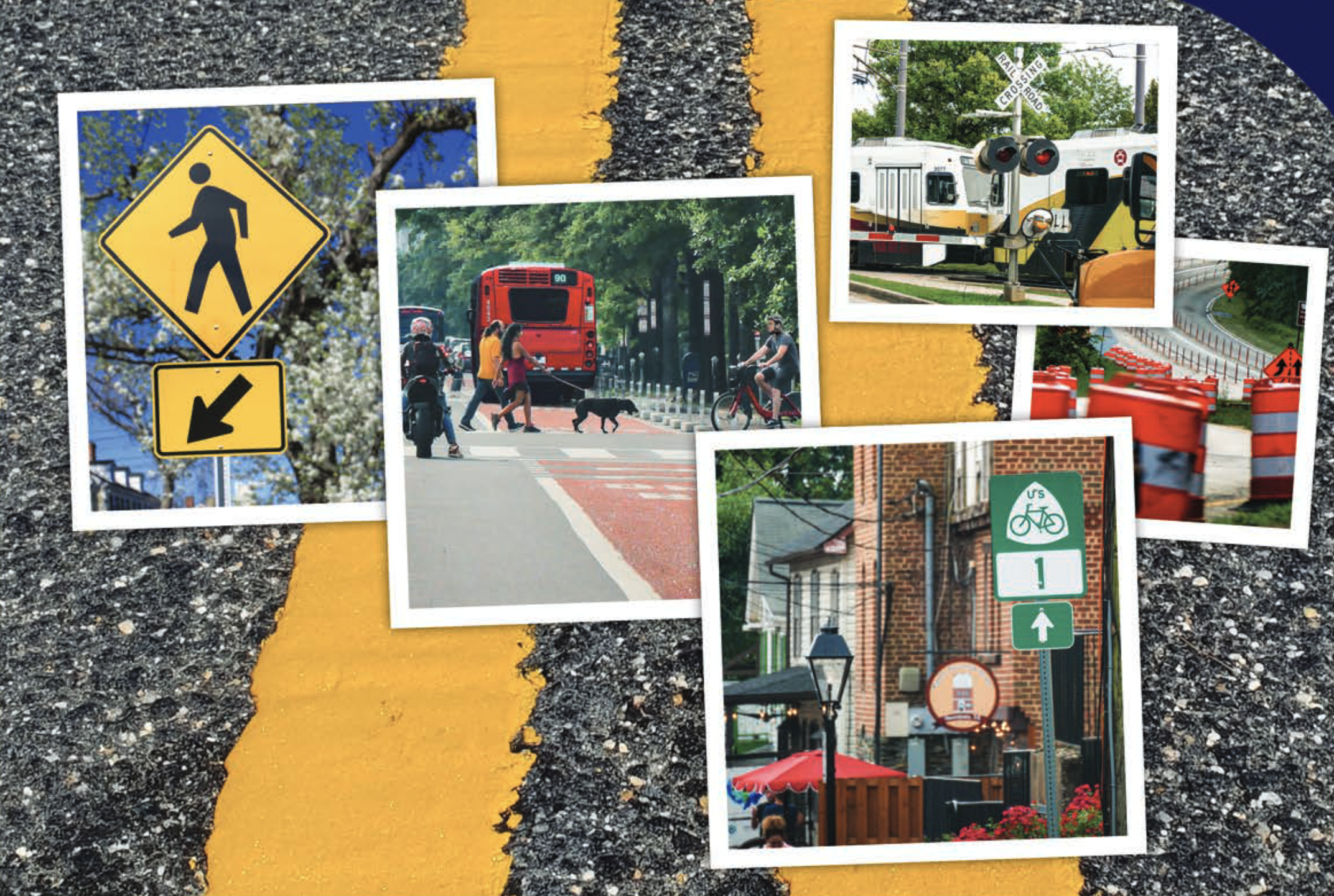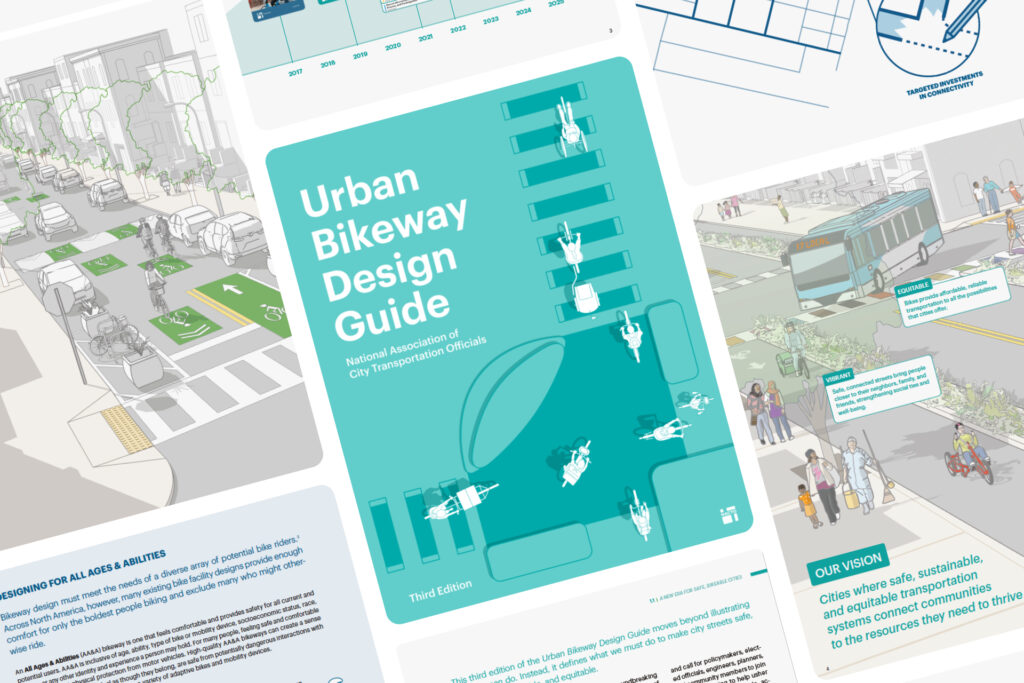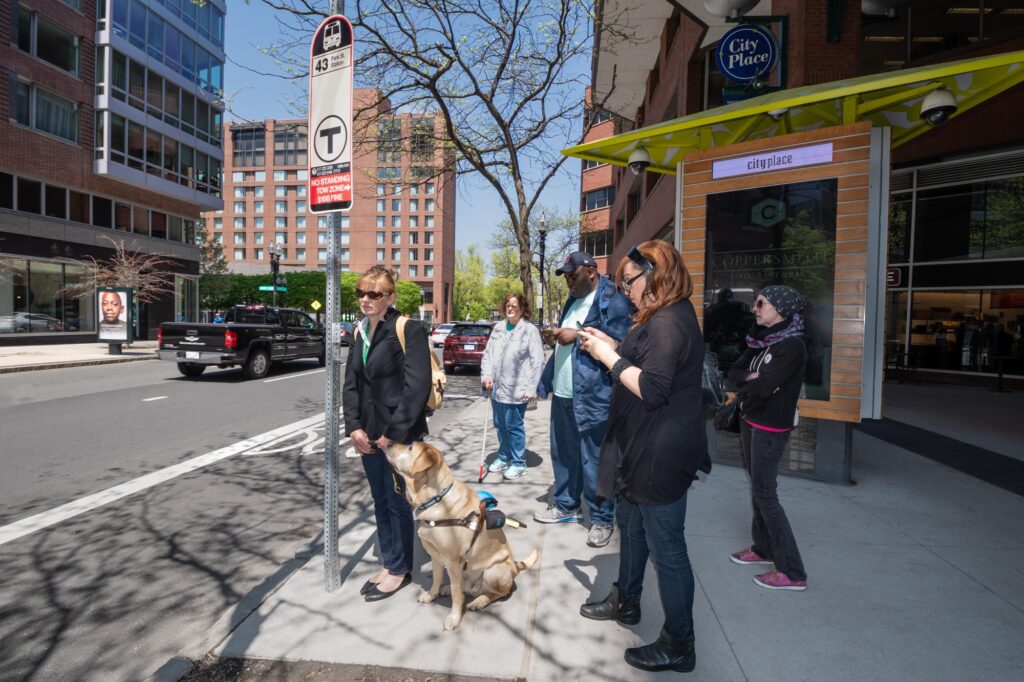
Corinne Kisner, Executive Director, and Janette Sadik-Khan, Chair of the National Association of City Transportation Officials (NACTO), today issued the following statement in response to the Federal Highway Administration’s (FHWA) recent publication of the 11th edition of the Manual on Uniform Traffic Control Devices (MUTCD):
The new edition of the MUTCD makes important steps toward a safer, more people-focused transportation system. While it does not include every necessary reform to create comprehensively safe streets, it moves us closer to USDOT’s goal of a transportation system that is safe, sustainable, and equitable.
The MUTCD, a little-known but crucial document that governs all road markings, speed limits, stop signs, and traffic signals across the U.S., has played an outsized role in the unsafe design of our streets. NACTO has spent years working to reshape this document, which has long prioritized moving vehicles quickly at the expense of safety, sustainability, and accessibility for people.
The stakes could not be higher. The U.S. is in the midst of a traffic safety crisis. More than 40,000 people die on American roads each year, far more than in other industrialized countries. Pedestrian deaths are at a forty-year high, and the costs are not borne equally: Black people are struck and killed by drivers at a significantly higher rate than White, non-Hispanic/Latine Americans. While all levels of government are responsible, the crisis stems in no small part from the antiquated federal standards that govern our streets.
NACTO has identified six key reforms to the MUTCD that could transform our streets and save lives. Highlights from the new draft addressing these key reforms and areas where we still need to see improvement include:
- The document is framed more inclusively around safety, accessibility, and access for all modes of travel, even as it continues to fall short in key areas to meet these goals.
- Speed limits will be set based on local safety needs, not by speeding drivers, a step that by itself will save hundreds of lives on U.S. roadways. The new MUTCD replaces the discredited “85th percentile” method with a context-sensitive method that accounts for adjacent land use, pedestrian and bicyclist needs, and crash history. It encourages using good street design to prevent speeding and explicitly discourages using the 85th-percentile method to set speed limits in all urban and suburban contexts and in small-town main streets.
- Proven safe street designs like best-practice intersections and separated bike lanes are now included in the manual, a significant improvement from the previous MUTCD, even as some treatments–like green-backed shared lane markings and proven bike signal treatments–are unreasonably not permitted.
- Pedestrian safety needs to be more adequately addressed, despite some improvements. The new draft includes explicit permissions to install new crosswalks, asphalt art, and sidewalk extensions, including guidance on how to address the needs of people with disabilities. However, stronger reforms are needed; engineers are still encouraged to wait until several people are hurt or killed before installing a traffic signal.
- The manual places unreasonable restrictions on cities and agencies building red transit lanes, an effective and necessary tool as cities work to recover transit ridership and use transit to rebuild local economies and cut greenhouse gas emissions.
- The alarming draft section on autonomous vehicles has been improved, even as questions remain about the viability of the approach this document takes, where streets are designed for AVs instead of AVs being required to work on the already-existing streets cities have.
These improvements would not have been possible without the steadfast advocacy of NACTO member cities, our advocacy partners, and communities across the U.S., including all those who added their voice on this important document, submitting over 100,000 comments to USDOT. We also appreciate the work on the part of our partners at the Federal Highway Administration in making progress to improve this crucial document.
In the coming weeks and months, we will conduct a detailed review of the 1,150-page MUTCD alongside users of the Manual: city engineers, planners, and designers working in NACTO member agencies across the country. We are also partnering with other national and local organizations to understand their perspectives. We will continue to press for the best and most flexible use of the MUTCD.
We are eager to work closely with the federal government, our members, and other organizations to ensure future editions of the MUTCD meet the needs of everyone who uses our streets. In the past, FHWA has not shared ideas or draft material with the public until the start of the formal rulemaking process, during which federal law prevents the agency from openly communicating with cities, advocates, and other stakeholders, making transparency and dialogue impossible. We are hopeful that a more open process will allow more input and a strong partnership between transportation leaders at every level of government.
Every day, people across the U.S. suffer the consequences of an MUTCD that hasn’t prioritized safety for all. We share Transportation Secretary Pete Buttigieg and the Biden-Harris Administration’s stated goal of zero roadway fatalities. By reshaping the document that shapes our streets, we can ensure a safer future for everyone who calls the U.S. home.
###
About the National Association of City Transportation Officials (NACTO)
NACTO is an association of 100 North American cities and transit agencies that exchange transportation ideas, insights, and practices and cooperatively approach national transportation issues. The organization’s mission is to build cities as places for people, with safe, sustainable, accessible, and equitable transportation choices that support a strong economy and vibrant quality of life. To learn more, visit NACTO.org, sign up for our newsletter, or follow us social media, including on LinkedIn, Facebook, and Instagram.
Contact
Alex Engel | [email protected]
Billy Richling | [email protected]
For Immediate Release
December 20, 2023



